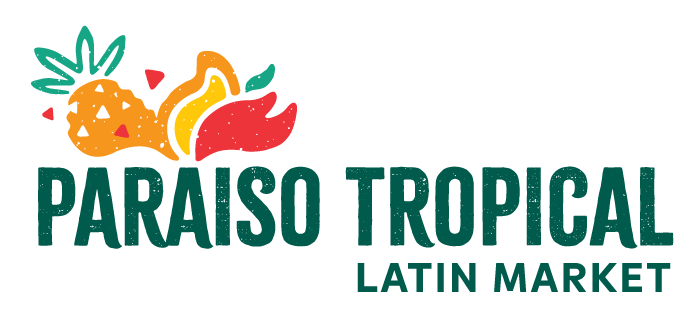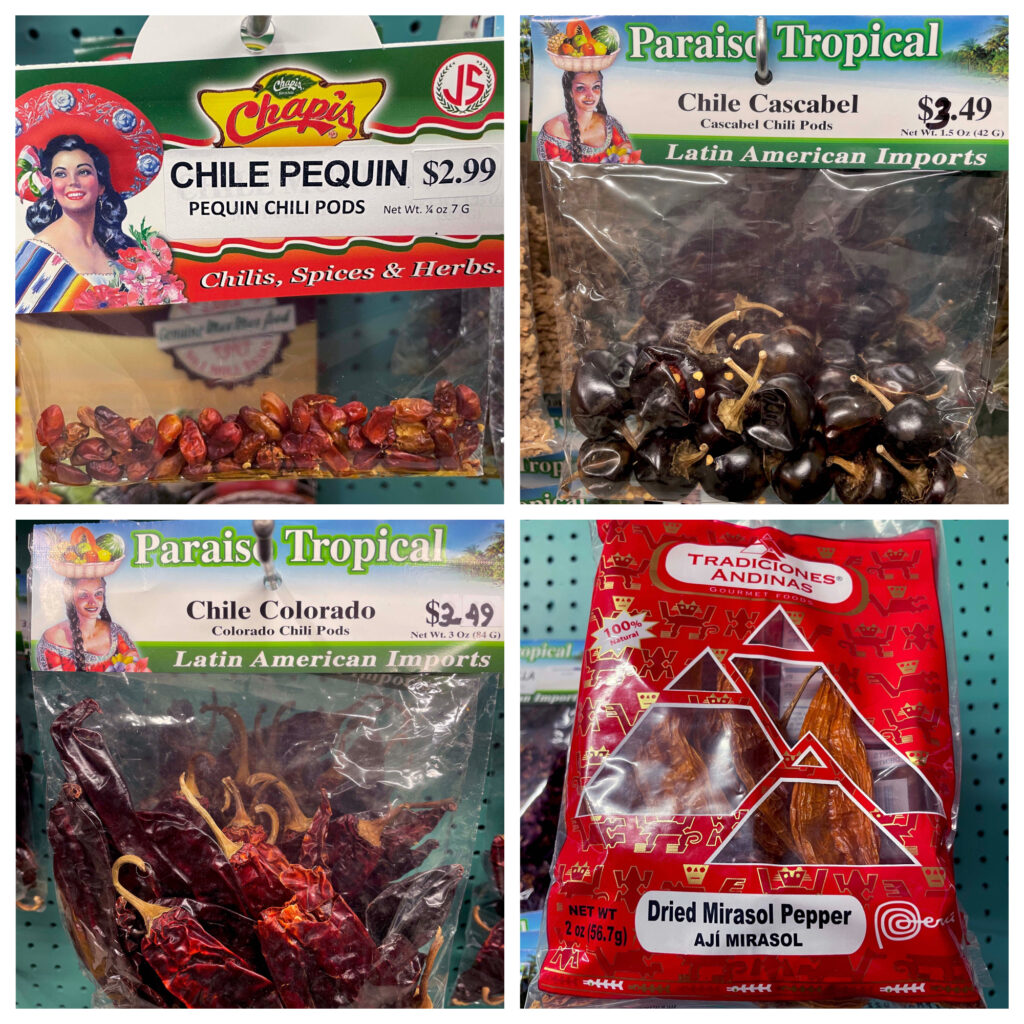A variety of chiles to spice up your dishes
Additional Q&As: Kristina de Guzman

Photos: Poushali Mitra
One of the common questions that Paraiso Tropical Latin Market gets from its shoppers are related to chiles (chilis). If you’ve ever popped by for a visit to our stores, you’ll be sure to notice right away that we have a section specially dedicated to dried chiles and there is a whole variety of them to choose from! We even have fresh ones, too, in our produce section.
“Since the beginning of the store, we started selling the herbs, spices, and chiles,” shares Paraiso co-owner and manager Bruna Campos Gonzalez. “Chiles and spices are a part of Central American and Mexican cuisine, and that was the focus of the store when Jesus Sr. and Alba [Gonzalez] opened [Paraiso Tropical].”
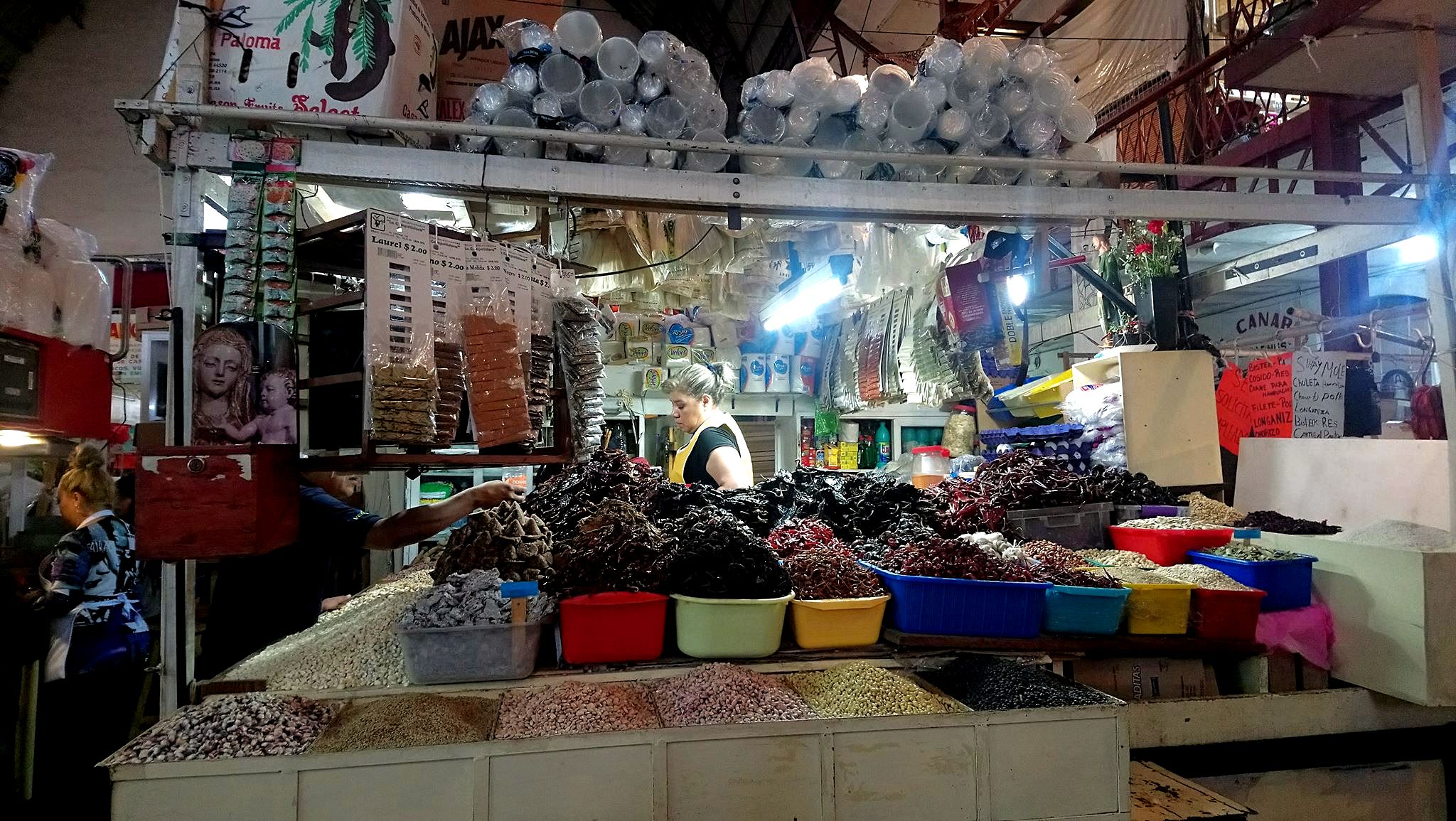
Photo: Poushali Mitra
Particularly for Canadian shoppers, a question that pops up is how to use different types of chiles.
We sell around fifteen to twenty different types of chiles,” Campos Gonzalez says. “The most popular ones are guajillo, ancho, árbol, chipotle, and habanero.”
Other dried chiles grown in Mexico which Paraiso sells also include chile pequin (or piquín), which is from the Mexican state of Tabasco and is used to make hot homestyle salsas; chile california (also known as New Mexico chile or chile colorado), which come from dried Red Anaheim chiles; chile cascabel; chile mirasol; and chile japonés (“Japanese chili pepper” in Spanish).
These chiles are also a key ingredient in salsas and sauces, from hot chipotle to salsa casera (homestyle mild salsa).
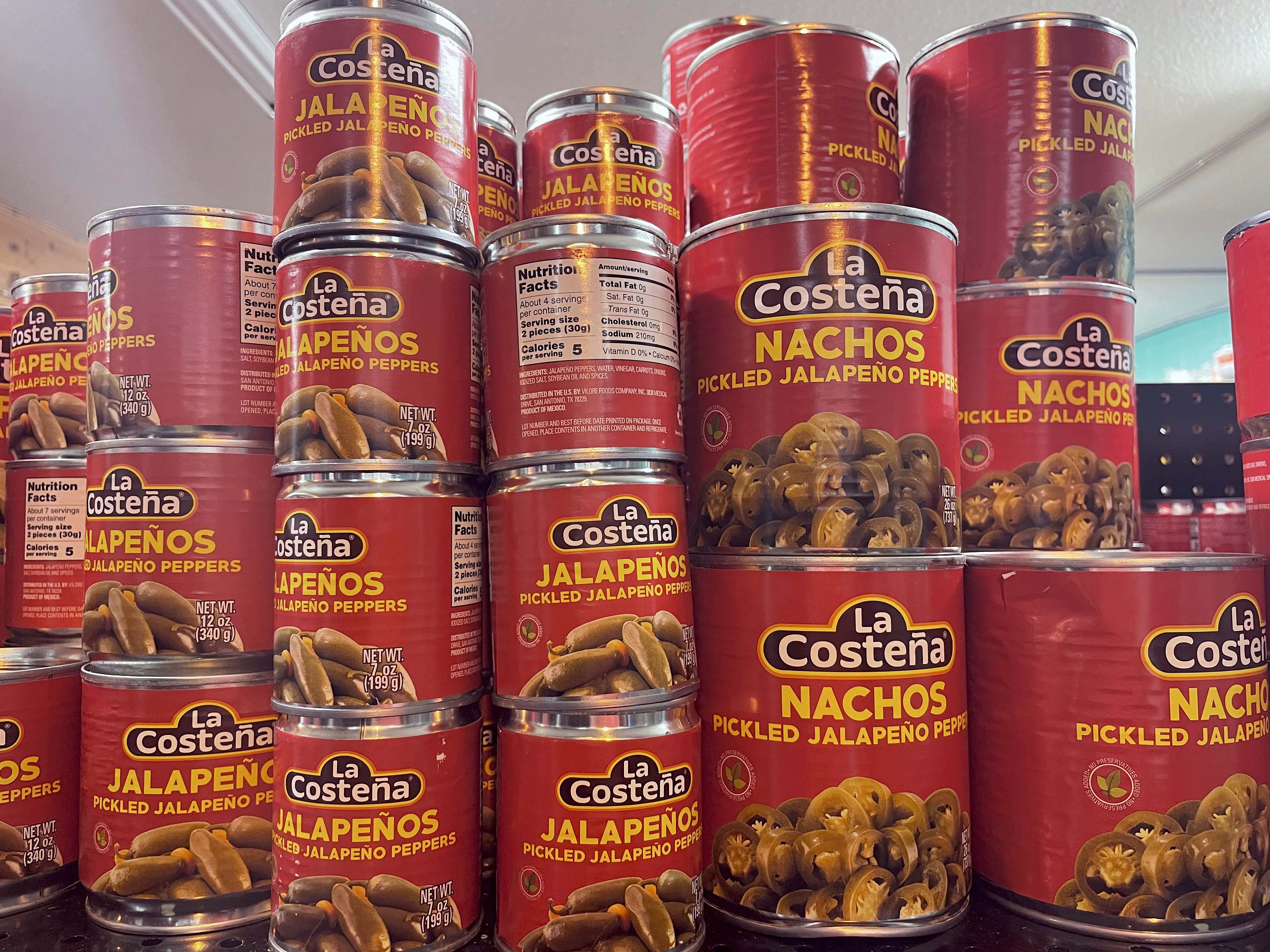
Photo: Poushali Mitra
“We also sold the canned chiles, because that’s a great part of Mexican food,” shares Campos Gonzalez. “But we would bring in what the customers asked of us, too.
Part of some Latin American [meals] include having a fresh chile – not necessarily spicy or hot – with lunch and dinner, she adds that the chiles give the food a fuller flavour and can also help with digestion.
The Origin of the Chile
Christopher Columbus set sail in search of new lands for sugar, coffee, and spices, and he didn’t leave the hot chiles aside. Like many others, he claimed to have discovered these spicy peppers. In reality, humans have used chiles to add a spicy kick to their meals for over 6000 years. These peppers are said to have originated in Mesoamerica (the region that extends from Central Mexico to Central America and northern Costa Rica) and were used by people for both food and traditional medicine. Eventually, cultivation of this crop spread across the world.
A quick search on world agricultural trading sites will show that today, Mexico is a main chile exporter, sending out about 24 per cent of the world’s chiles.
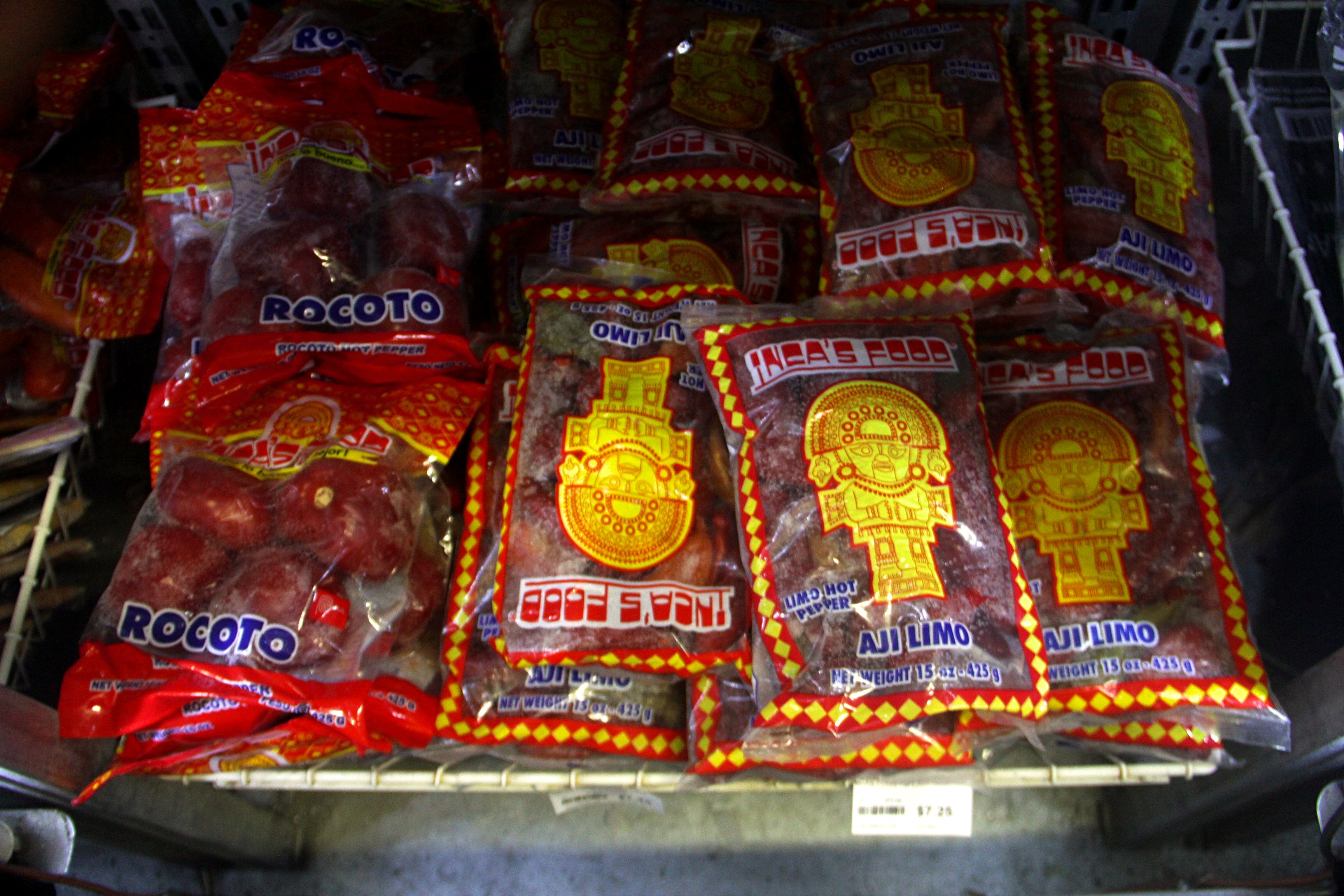
Photo: Kristina de Guzman
“We mostly bring the chiles from Mexico and Peru,” says Campos Gonzalez. “We source our chiles from different suppliers at a time according to availability.”
Paraiso also sells Chilean ajís (chili sauces), such as Don Juan’s Ají Pebre and Don Juan’s Ají Chileno Crema.
How Hot are These Chiles?
If you have a look at our online store, you can find some very helpful information on our selection of dried chiles, including heat levels according to the Scoville scale. For example, chiles of the New Mexico/California/Colorado variety have a heat range of anywhere from 500 to 2500 Scoville heat units (SHU).
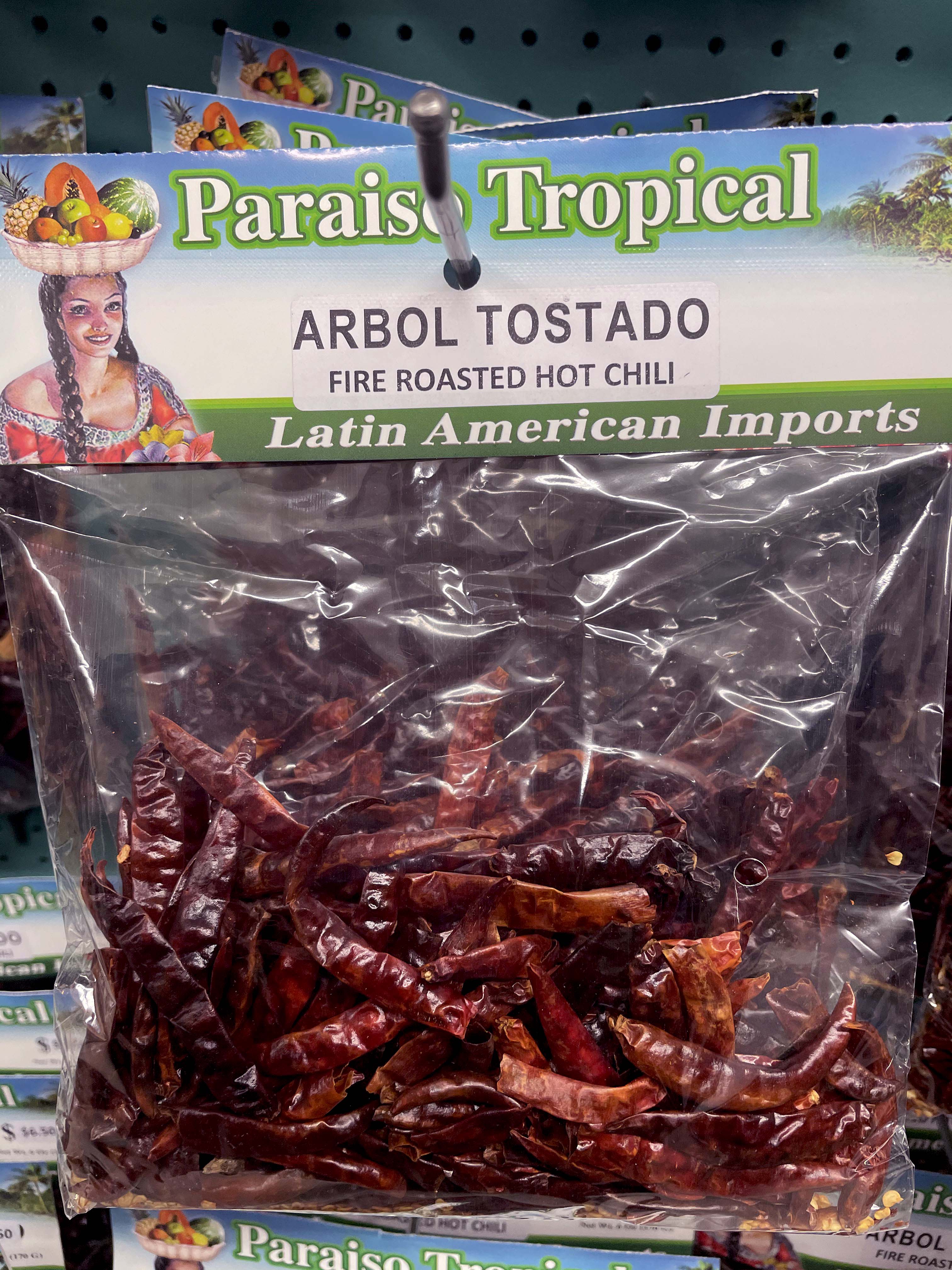
Photo: Poushali Mitra
Going just a tiny bit further with the heat, the fresh chile mirasol (which means “look at the sun”) has a 2500 to 5000 SHU range and is popular in making traditional mole sauces (Mexican sauce typically made with chocolate); when dried, chile mirasol becomes chile guajillo. Paraiso Tropical also carries the Peruvian paste ají mirasol, which can be added to soups and stews.
Meanwhile, when roasted, chile de árbol (“tree-like chili”)’s aroma is heightened along with its spiciness, which can range from 15,000 to 30,000 SHU. Roasted chile de árbol is also found in India, along with Mexico.
If you’re looking for something just as spicy as chile de árbol, there’s chile japonés. The latter can be added to Asian, Latin American and Caribbean-inspired dishes and is prized for its wonderful heat (ranging from 15,000 to 30,000 SHU).
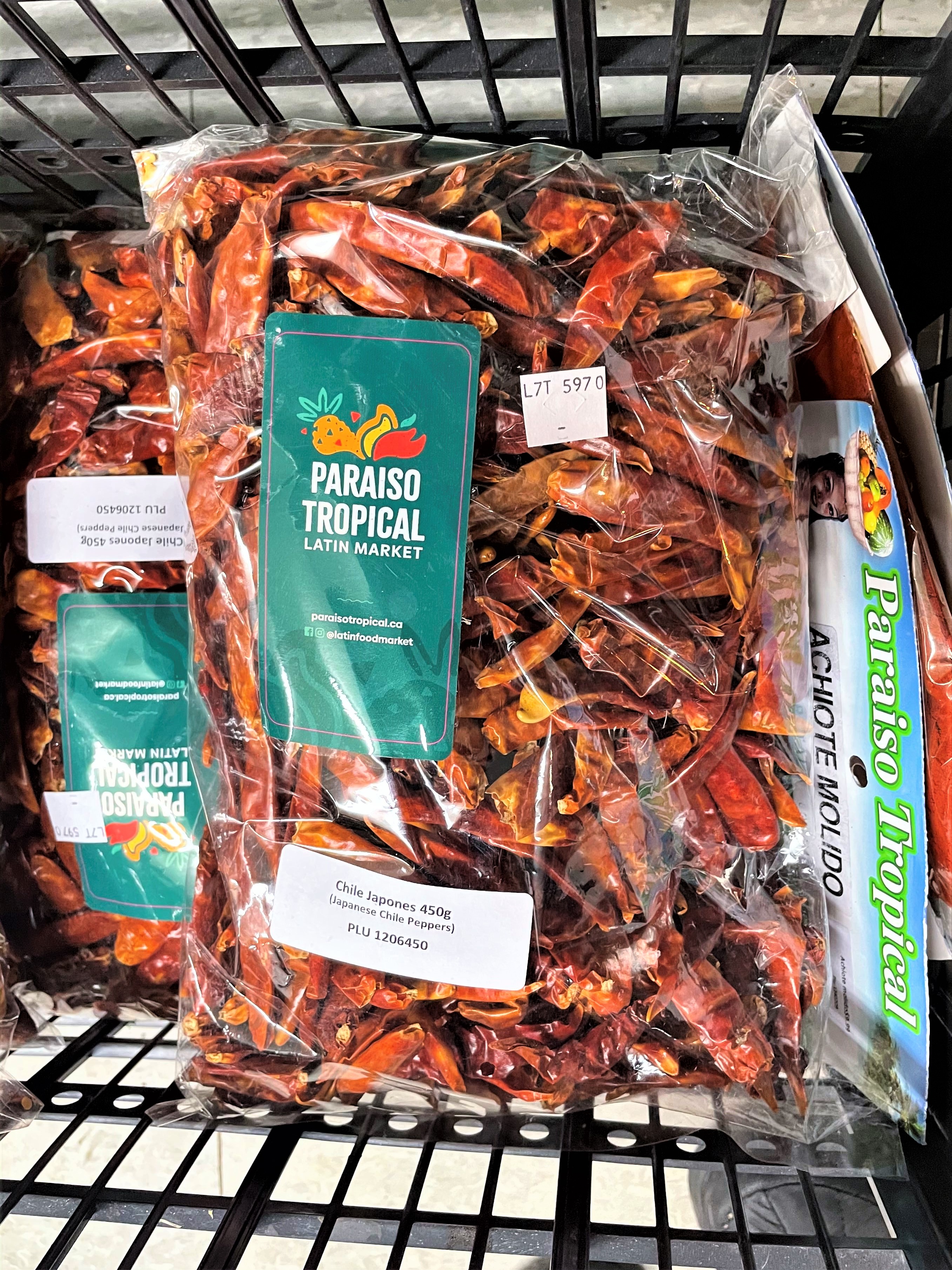
Photo: Poushali Mitra
Still Not Sure Which Chiles to Choose?
We had a chance to chat with a couple of Paraiso South staff, Natalia Marcenaro and Elvia Agredano, as well as shopper (and recent Taste the Tropics Foodie Contest winner) Stephen Kozma, to learn about the chiles they typically use in some of their cooking!
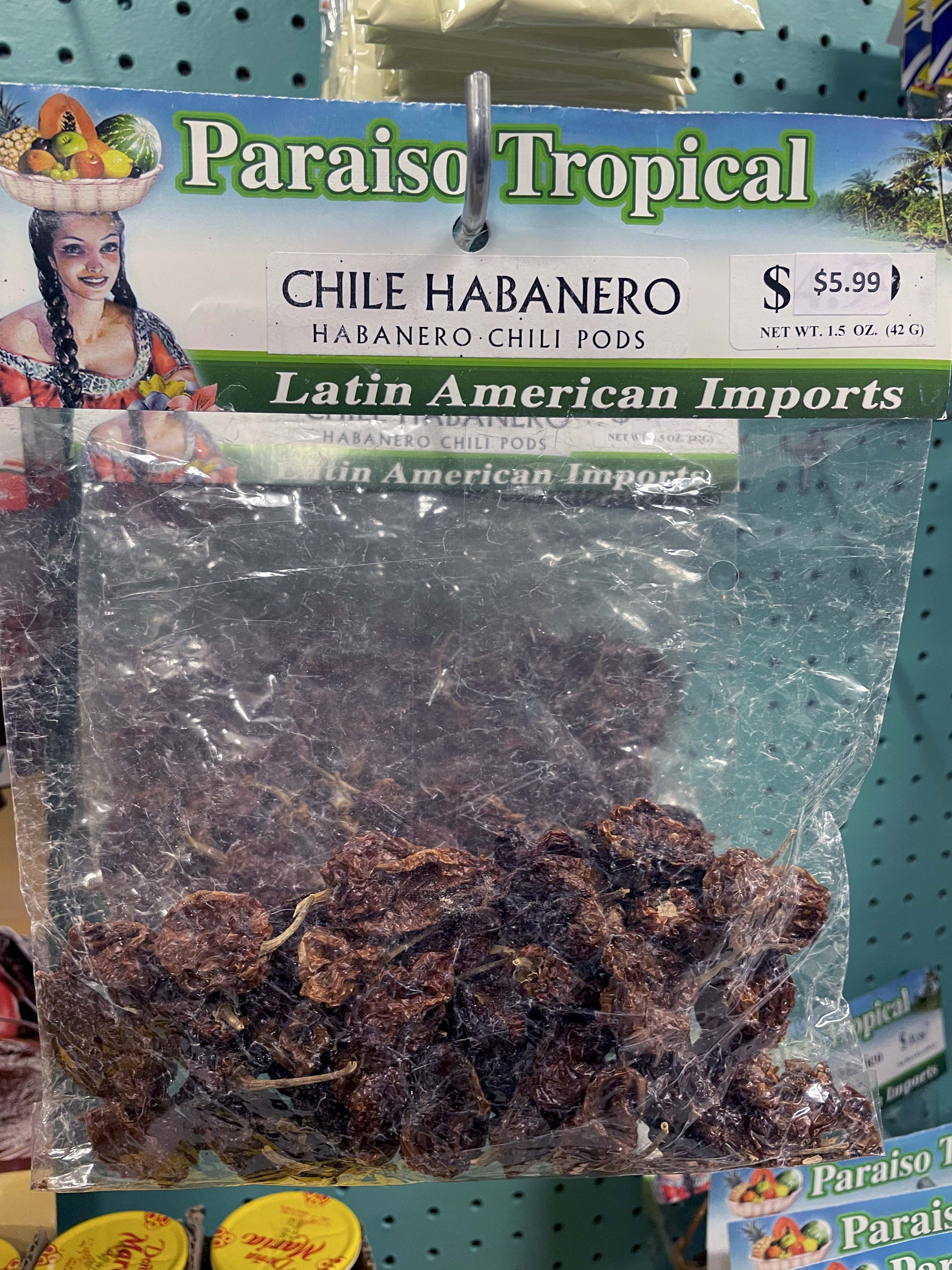
Photo: Poushali Mitra
There’s a variety of chiles here in Paraiso – do you use them in your cooking and if so, which ones do you use the most?
Natalia: The one that I like to use sometimes – a little bit – is the habanero. It’s really spicy, but sometimes, when [my family and I are making] fajitas and we wanna spice up the meat, we add a little bit of that.
Elvia: Yes. Because of the area that I’m from [in Mexico], I use mostly jalapeños and [for] the dried chiles – guajillo, the ancho pasilla, mulato or the California are the chiles that I use most. Because I don’t like [them] too spicy [chuckles].
Stephen: Generally, what I like is sort of a variety. Things like the mulato and the ancho are sweeter and milder. [They] gives a different flavour. Then you get the guajillo and the cascabel which are spicier. And then I was looking into other parts of South America and I found that you have a Peruvian chili in the freezer [pulls out the ají rocoto from his shopping basket]. So I thought, ‘That’s interesting! I’m gonna try that one.’ ‘Cause I like spicy, too, so I hear that one’s quite a spicy pepper, a spicy chili.
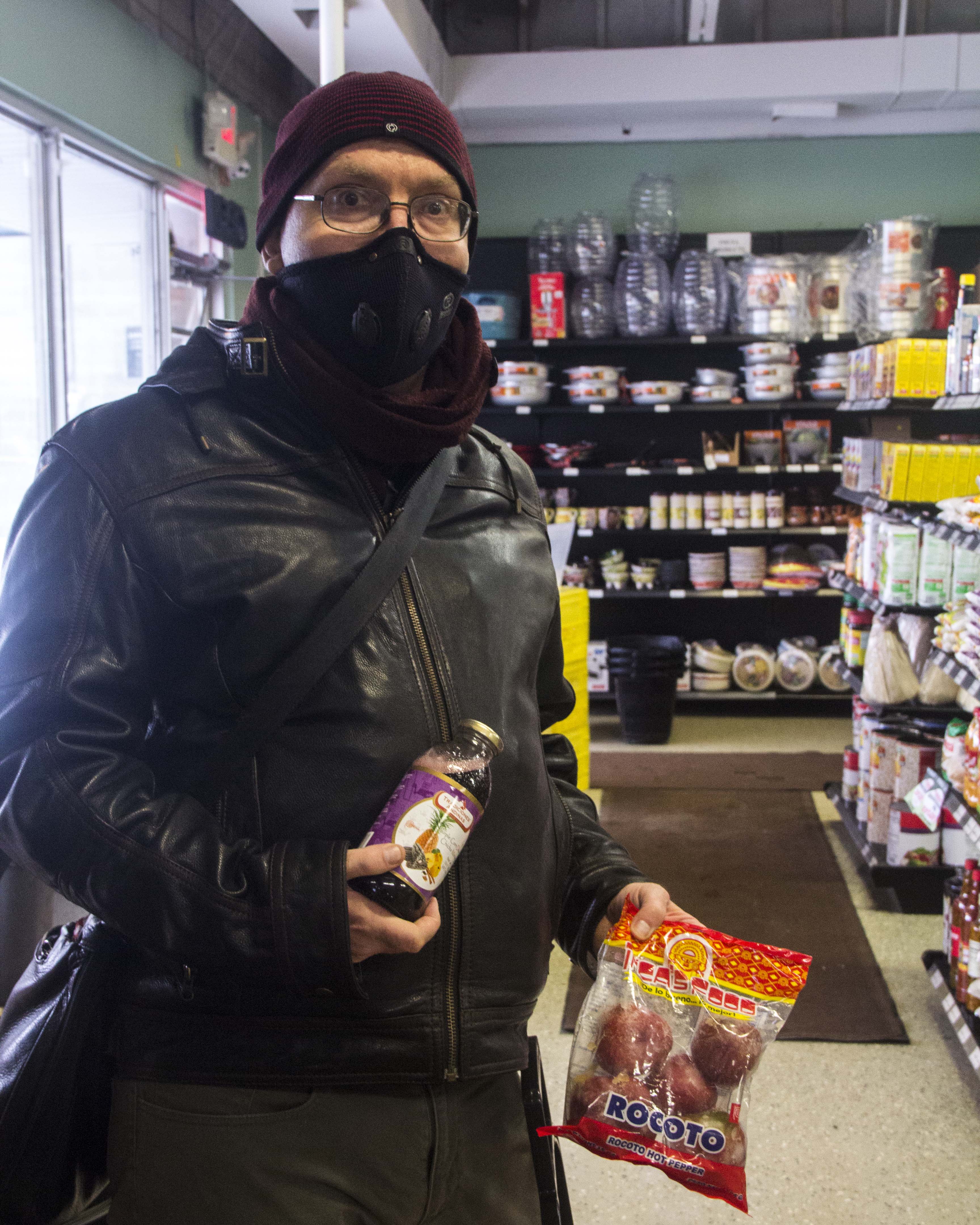
Photo: Kristina de Guzman
What kinds of dishes do you make with the chiles you use?
Elvia: You can make the adobo [sauce], the mole, and [dishes] like fajitas. You can make your own salsa and marinate your food by yourself. Sometimes, people choose to do the whole process [of making sauces & salsas] from scratch.
Do you need to blend the chiles or do you just chop them?
Elvia: Yes, you need to blend them and then process [the mixture] through the sieve to make the salsa clean.
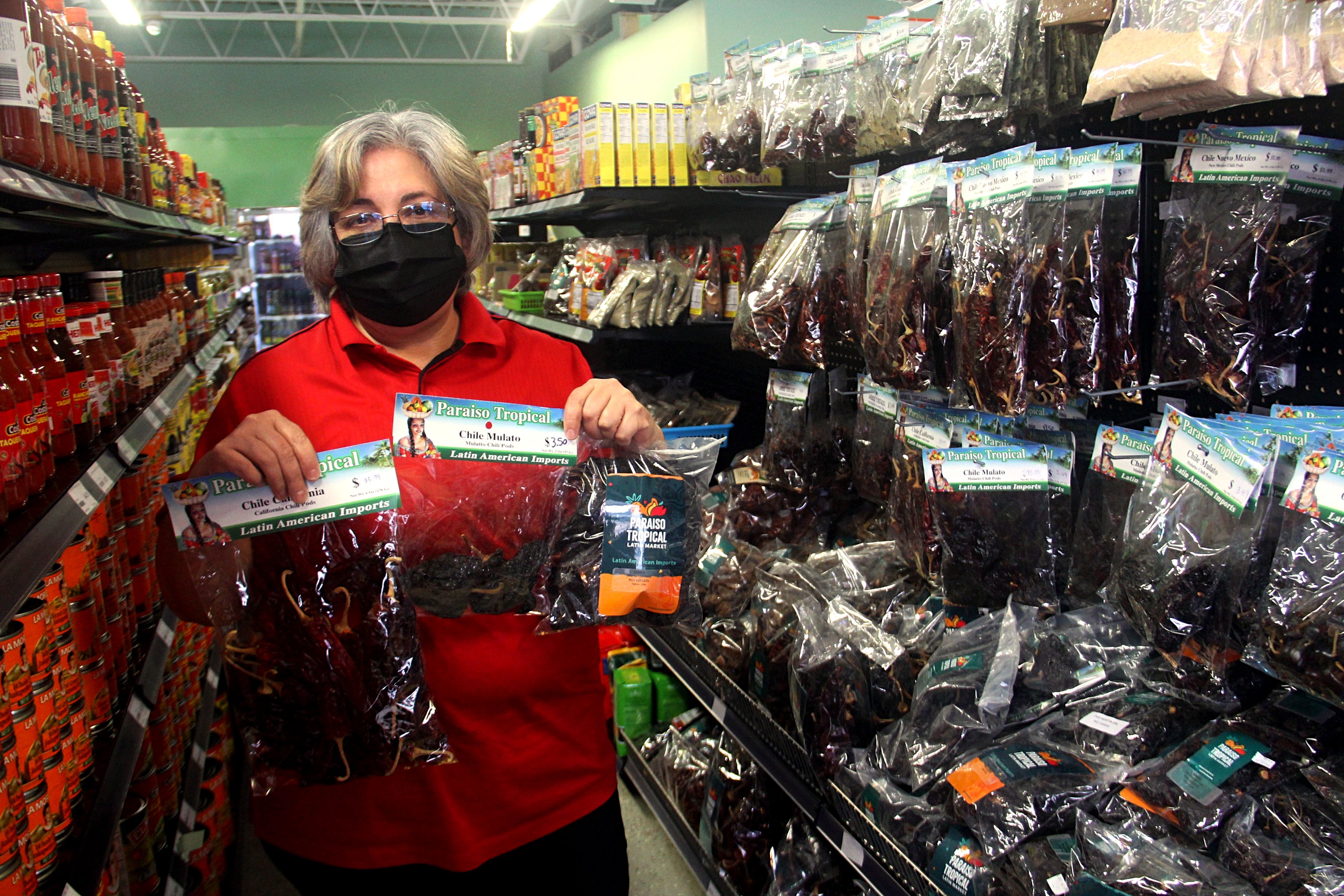
Photo: Kristina de Guzman
Up for adding more spice to your dishes? Our variety of chiles are available through our online store and at either Paraiso’s northside and southside store locations! The knowledgeable and helpful staff can also help you pick the right chile for your needs and provide some dish or meal ideas that can best go with a particular type of chile.
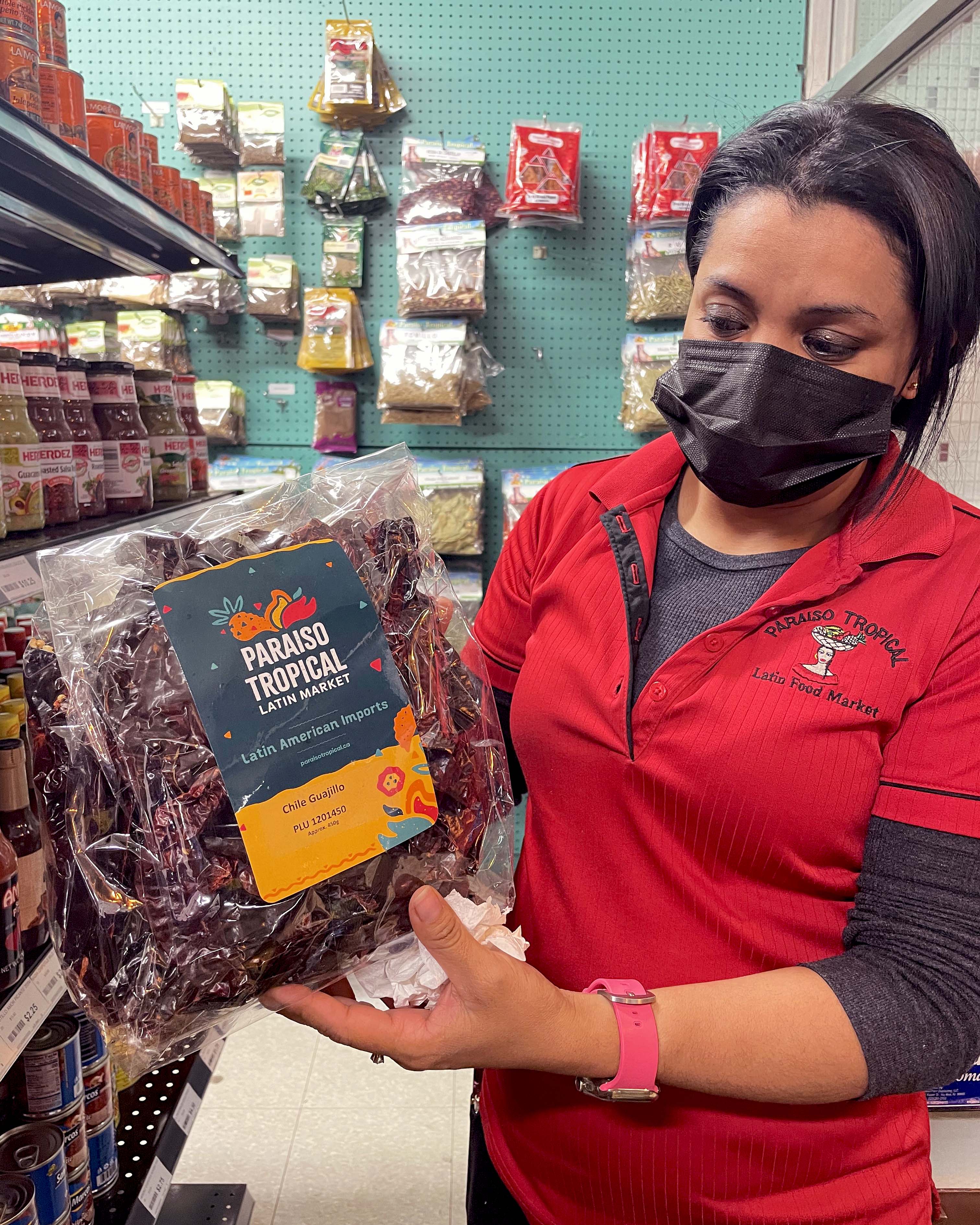
Photo: Poushali Mitra
Paraiso Tropical – Northside
9136-118 Avenue NW, Edmonton, AB
Mondays to Saturdays: 9:00am-8:00pm
Sundays & Holidays: 11:00am-4:00pm
780.479.6000
Paraiso Tropical – Southside
6926-104 Street NW, Edmonton, AB
Mondays to Saturdays: 9:00am-8:00pm
Sundays & Holidays: 11:00am-4:00pm
780.705.9711
